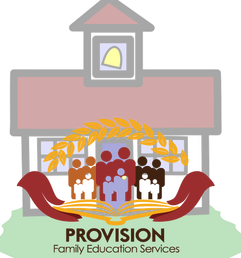 The One-Room Schoolhouse It's been a while since the last post. Our family moved the day before and it's been a whirlwind couple weeks as the students have adjusted to a new norm. One of the most common questions that I'm asked is, "How can you teach different ages and grades?" The answer is, "We figure out what works." It starts with a belief that educating a mixed age and ability group is possible. Historically, students attended a one-room schoolhouse (find reference for history). In the present day, public school teacher are often teaching to a range of 1-3 grade levels in one classroom. Many classrooms are inclusive, and while peers may be approximately the same age, there are often mixed ability levels. As a former public school educator and tutor, I know firsthand that students are often working on many different levels. Homeschooling co-ops, homeschooling families, charter schools, and other alternative education programs have all demonstrated success in teaching multi-age groups. What's Working? There are always some road bumps as students get acclimated to a new environment. So far, what is really working well for us at the Academy is: 1) Consistent routine - We have a monthly theme, a weekly theme, and a daily curriculum integration. We do 3 activities per block and we use music to transition. This accomplishes a few things. The kids know what to expect and so they feel safe. They are familiar with the songs and some of the materials. This allows them to easily participate. It also gives us a common language to describe our day. Soon, the students will have visual schedules to refer to. 2) Simple, enforceable rules - Child development experts across the board recommend using about 3-5 rules to maintain order and structure. A rule that cannot be enforced, is no rule at all. The majority of our rules involve maintain personal space and safety. Things like, keep your hands to yourself and stay in your space in your area. We have flexible seating so there's a lot of movement leeway in one's personal space. For teaching, I ask that students have a listening face in a listening space. And I explain what that looks like. 3) Working in spurts - Our blocks are typically broken down into a 10-15 minute teacher led activity, a interactive group activity, and an independent activity. Using music and movement for transitions can help keep the students calm and focused. As more students enroll, the dynamics will shift and we will find new things that work. As the students mature and regress, we will find new things that work. As I learn and grow, we will find new things that work. |
AuthorShay Malone is a development specialist. A certified teacher (emotional and learning disabilities and middle school mathematics) with a background in psychology, she has worked with children and families for over 15 years in many different capacities. She believes that emotional growth is just as important as academic achievement. Shay is an advocate for homeschooling, exceptional learners and quality education. Archives
September 2018
Categories
All
|
Telephone757-209-2095
|
|
 RSS Feed
RSS Feed
